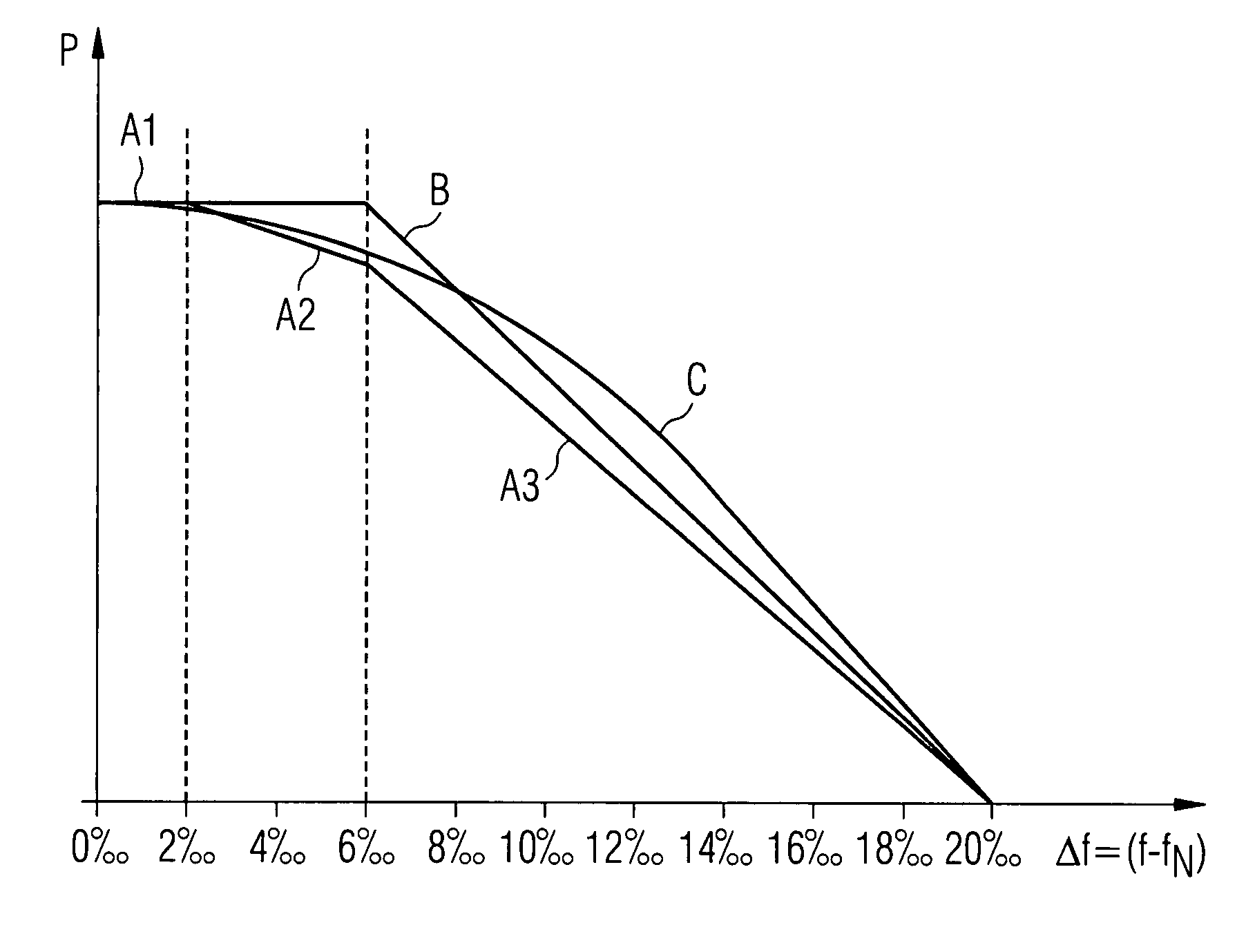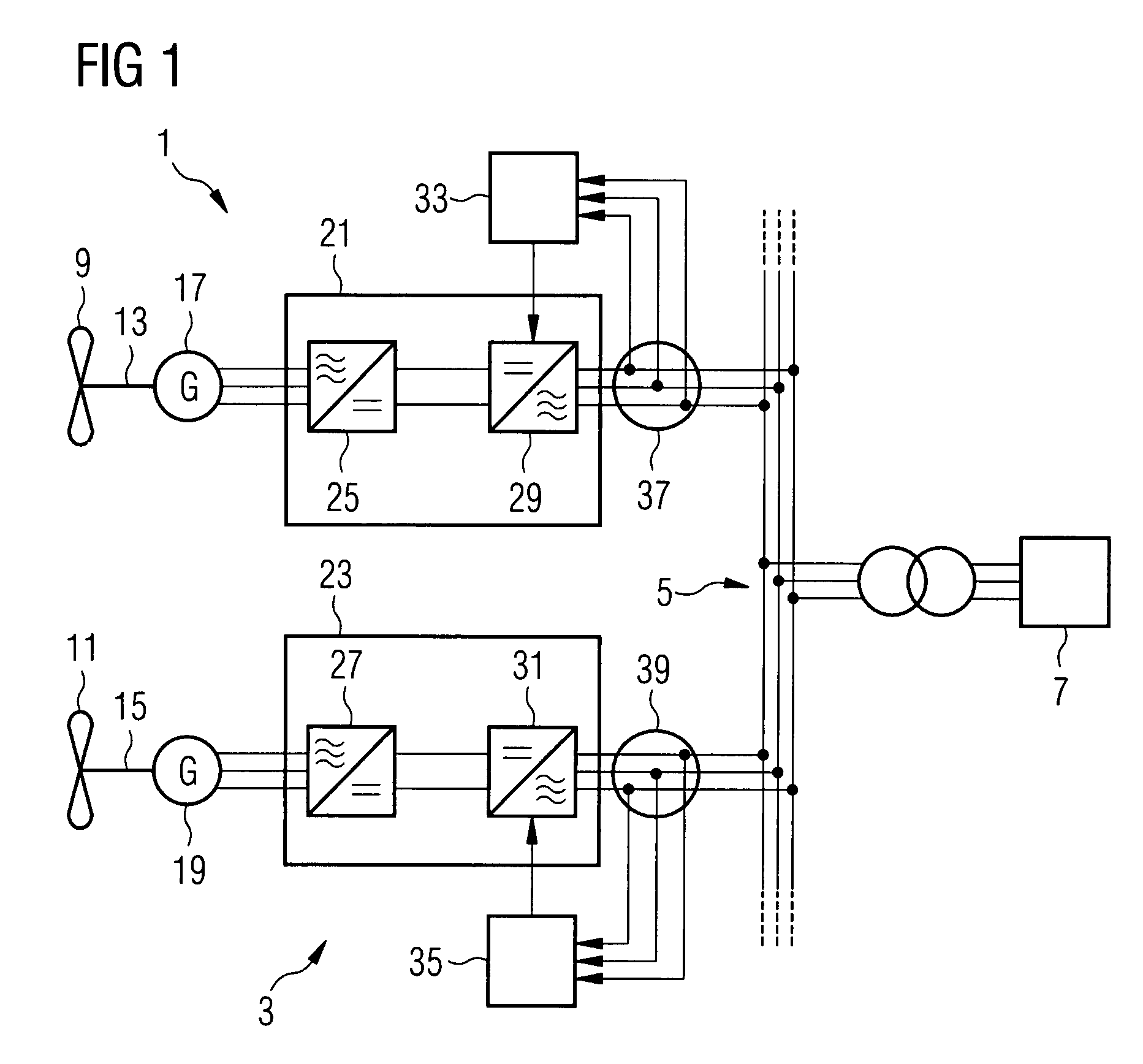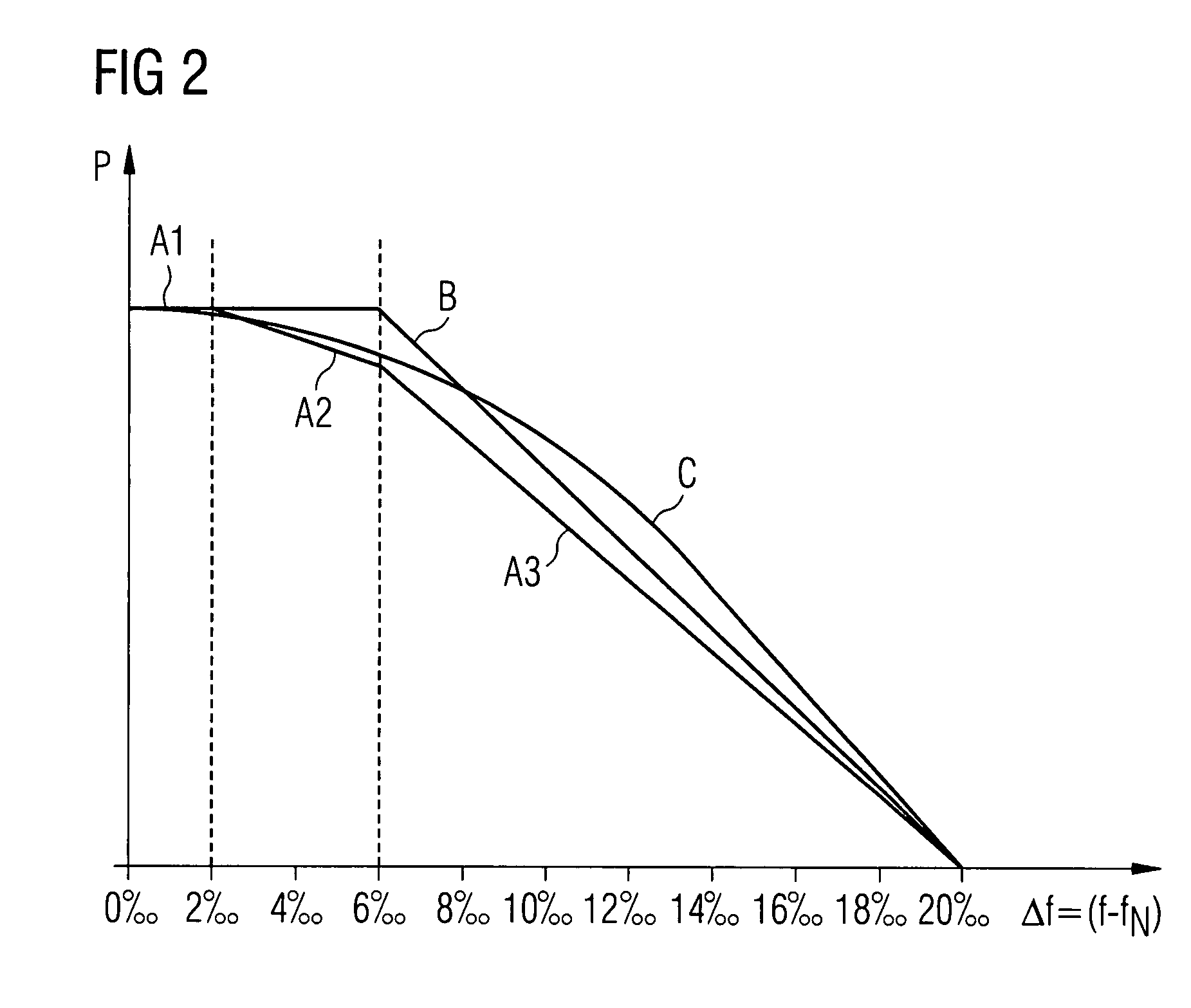Wind energy installation and method of controlling the output power from a wind energy installation
a technology of wind energy installation and output power, which is applied in the direction of electric generator control, machine/engine, dynamo-electric converter control, etc., can solve the problems of increasing output power loss, counter-weighting loss, and only losing output power outside the dead band, so as to improve the reaction to grid frequency changes
- Summary
- Abstract
- Description
- Claims
- Application Information
AI Technical Summary
Benefits of technology
Problems solved by technology
Method used
Image
Examples
first embodiment
[0023]The wind energy installation shown in FIG. 1 comprises a number of wind turbines two of which are exemplary shown in the figure. The wind turbines 1, 3 produce electrical output power and are connected via an internal node 5 to an external utility grid 7. Although the first embodiment comprises more than one wind turbine, it can also be implemented for a single wind turbine.
[0024]The wind turbines 1, 3 are variable speed wind turbines, i.e., the rotational speed of the rotor 9, 11 is allowed to vary depending on the wind conditions.
[0025]Each wind turbine 1, 3 comprises a rotor 9, 11 with a shaft 13, 15 transmitting the torque of the wind driven turning rotor 9, 11 to an AC generator 17, 19 which transforms the mechanical power provided by the rotation of the shaft 13, 15 into electrical power. Although not shown in the Figure, the shaft 13, 15 may be divided into a rotor shaft extending from the rotor to an optional gearbox and an output shaft extending from the gearbox to th...
second embodiment
[0034]In the invention the output power P is reduced according to a non-linear function of the grid frequency deviation Δf In the present embodiment, this function is chosen such that the output power P becomes zero as soon as the frequency deviation Δf reaches 20 per mill. The output power P is reduced as soon as the measured grid frequency f exceeds the nominal grid frequency and is, e.g. a negative quadratic or cubic function of the frequency deviation Δf. Note that although the output power is a negative quadratic or cubic function of the frequency deviation in the present embodiment, the output power could be any non-linear function reducing the output power with increasing frequency deviation Δf, in particular, any negative polynomial. Furthermore, a non-linear function could, e.g., be represented by a transfer function. Another possibility would be to combine linear and non-linear functions, e.g. defining a linear function for a first frequency range and a non-linear function...
PUM
 Login to View More
Login to View More Abstract
Description
Claims
Application Information
 Login to View More
Login to View More - R&D
- Intellectual Property
- Life Sciences
- Materials
- Tech Scout
- Unparalleled Data Quality
- Higher Quality Content
- 60% Fewer Hallucinations
Browse by: Latest US Patents, China's latest patents, Technical Efficacy Thesaurus, Application Domain, Technology Topic, Popular Technical Reports.
© 2025 PatSnap. All rights reserved.Legal|Privacy policy|Modern Slavery Act Transparency Statement|Sitemap|About US| Contact US: help@patsnap.com



